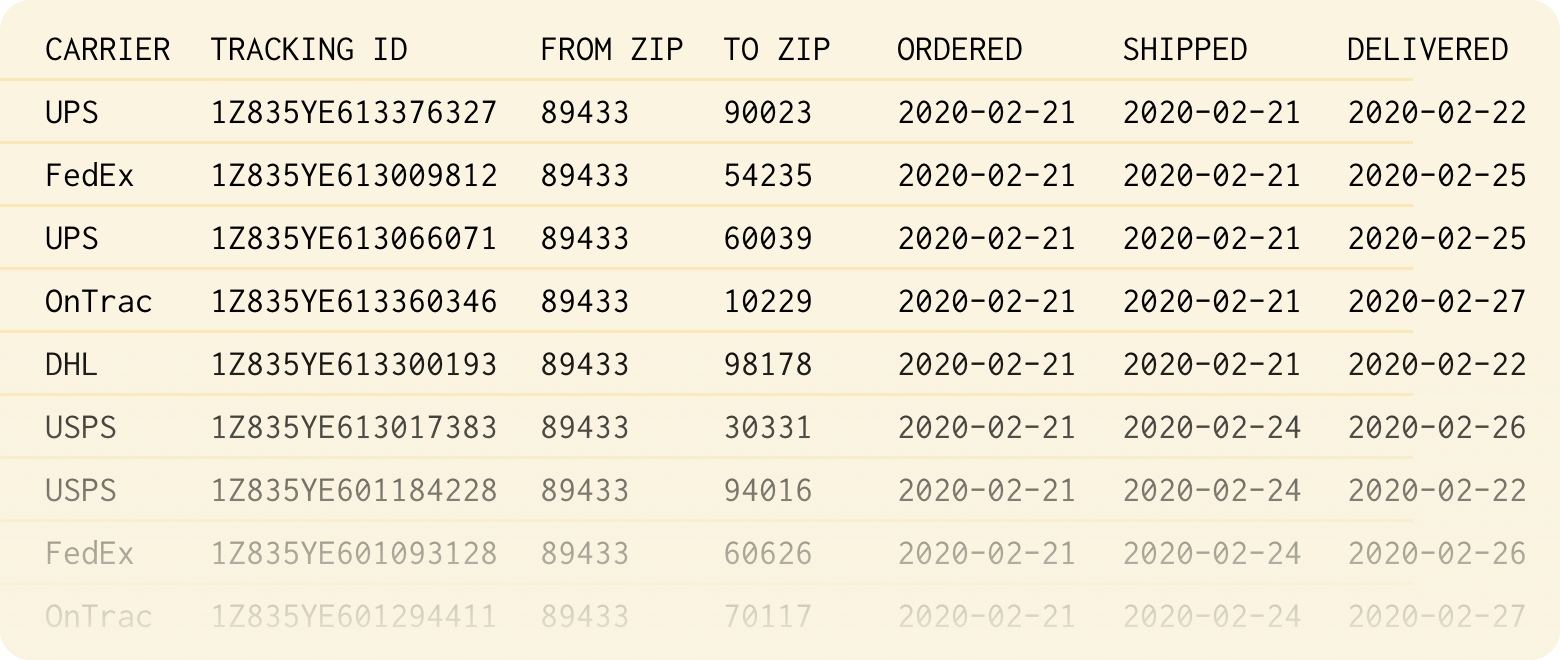Shipium Specs Carrier Selection
Understand how the service works and requirements for integration.
Initial Setup
The Shipium platform is able to perform better than other solutions because of how it treats regular fulfillment objects as first-class citizens. The data modeling that powers decisions behind our APIs is powerful because we factor in the properties and attributes of nodes like Fulfillment Centers, Packaging, and Carrier Methods.
As a result, all customers must complete a one-time setup of these objects in their account.
Customers get started by working with the Shipium team to set up an account for the organization and an initial set of users. Once the account is created, users can configure by themselves their FCs, Carriers/Methods, and Packaging as illustrated below, or reach out to the Shipium team to help with the process.
Fulfillment Centers
Description
The majority of fulfillment decisions stem off an understanding of where shipments are shipping from. Getting a graph of your fulfillment network setup is a unique and critical part of using Shipium's platform and the Carrier Selection product.
Example configuration
- For each FC in your network, provide details like location and cut-off times.
- Map which carriers, methods, and package types/sizes are available at each FC.
Carriers and Methods
Description
Shipium strives to work with your existing carrier contracts versus forcing our contracts on customers in a sell-through fashion. Therefore customers must set up their carrier contracts on the platform to get started.
Example configuration
- For each carrier, base account and contract details.
- For each method from a carrier, details like destination type and rate tables.
Packaging
Description
Package types and sizes are important to Carrier Selection because the service helps optimize the correct package size per the SKU dimweights included per order, which in turn dramatically impacts which method and label is selected for shipment.
Example configuration
- For each package, details like dimensions and weight maximum.
- Any hazard constraints.
Historical Shipping Data
Description
The Shipium platforms makes several calculations based on stochastic modeling of previous shipping data. If we calculate shipping from State X to State Y typically takes 2 days versus the standard carrier SLA of 5 days, then that is how we are able to dynamically select methods at a cheaper cost. Uploading around 6-12 months of historical shipping data provides everything needed.
Example configuration
- Export shipping data from existing TMS, OMS, or WMS systems.
- We provide a guide of which data points and formatting is needed.

Where Carrier Selection Fits
The service usually integrates at the individual warehouse management system (WMS) level at a chosen FC. Customers choose to call our APIs immediately upon picking an order. We receive the call then make decisions around packaging sizes and method/label selection, then send those decisions along to the FC to print the label we provide.

How It Works
Carrier Selection is consumed via a set of system-to-system level APIs that sit on the Shipium platform. You make a call to Shipium, and we provide a response.
What you send to us
- Order information, including dimweights for all SKUs
- Which FC the order is shipping from
- Customer destination location
What we return
- The most optimized package type and size to use
- Which carrier method is the best option
- Which carrier methods were evaluated and not the best
- The label corresponding to the selected method, which can be pushed to the FC to print